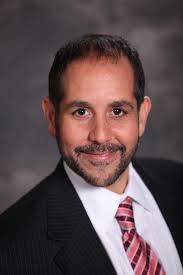![]()
Impeccable Customer Service Tip #322
Create a list of non-negotiable “Customer Experience Performance Standards” *with* your staff. Ask everyone to sign off on them and be sure to include these standards in your employee handbook.
![]()
Engineering the Customer Experience
![]()
Create a list of non-negotiable “Customer Experience Performance Standards” *with* your staff. Ask everyone to sign off on them and be sure to include these standards in your employee handbook.
![]()
![]()
“In the world of customer service, it’s important to remember your competitor is only one mouse click away.”
-Doug Warner
![]()
![]()
Who takes ownership of the triage on your company’s “general” e-mail inbox? … And who does it when that person is away? Determine a non-negotiable standard for customer response times (and rules that determine when it’s better to respond via telephone). Now post your promise to your customers on your web site so as to manage their expectations (and remember to under promise and over deliver).
![]()
![]()
Contrast provides clarity. One way to anticipate the needs of your customers is to bring your front-line staff together and collaboratively answer the question, “What are the possible pet peeves of our customers?” and then put systems in place that won’t allow such annoyances to occur in the first place.
![]()
![]()
An acceptable response should never be “I don’t know.” It’s acceptable to admit when you don’t know something AND THEN offer to find the answer to their question. Leaving it at “I don’t know.” effectively says to the customer that you’re not informed or (worse) you don’t even care to be.
![]()
![]()
When a customer is upset, don’t say “I do apologize.” We don’t tend to use that phrase outside of business, yet some people assume it’s fitting to use with customers. It’s not. Too often “I do apologize” is said with an inflection that doesn’t demonstrate sincerity or empathy. Instead, you might consider saying (with a sincere tone), “My apologies.” or “I’m so sorry.” And then, of course, move into discussing a solution.
![]()
![]()
“The next time you complain about how difficult it is to do business in this challenging economy, take a second look at the way you are doing business.”
-Carmine Gallo, Forbes Contributor
![]()
![]()
When phoning a client, instead of asking, “Am I catching you at a bad time?”; ask, “Am I catching you at a good time?” What other customer-centric approaches have you tried?
![]()
![]()
There is simply no better form of marketing than the consistent delivery of impeccable customer service. While other companies are spending large sums of money to advertise (in an effort to attract new customers, typically), why not spend your time and money on engineering the customer experience for your *existing* customers? This strategy promises to pay greater dividends.
![]()
![]()
When you first meet or speak with a referred client (“a referral”), be sure to make mention of the person who connected the two of you; the referrer. Not mentioning the referrer (“the connector”) could appear unappreciative, ungrateful or — at a minimum — forgetful.
![]()









.
.
.